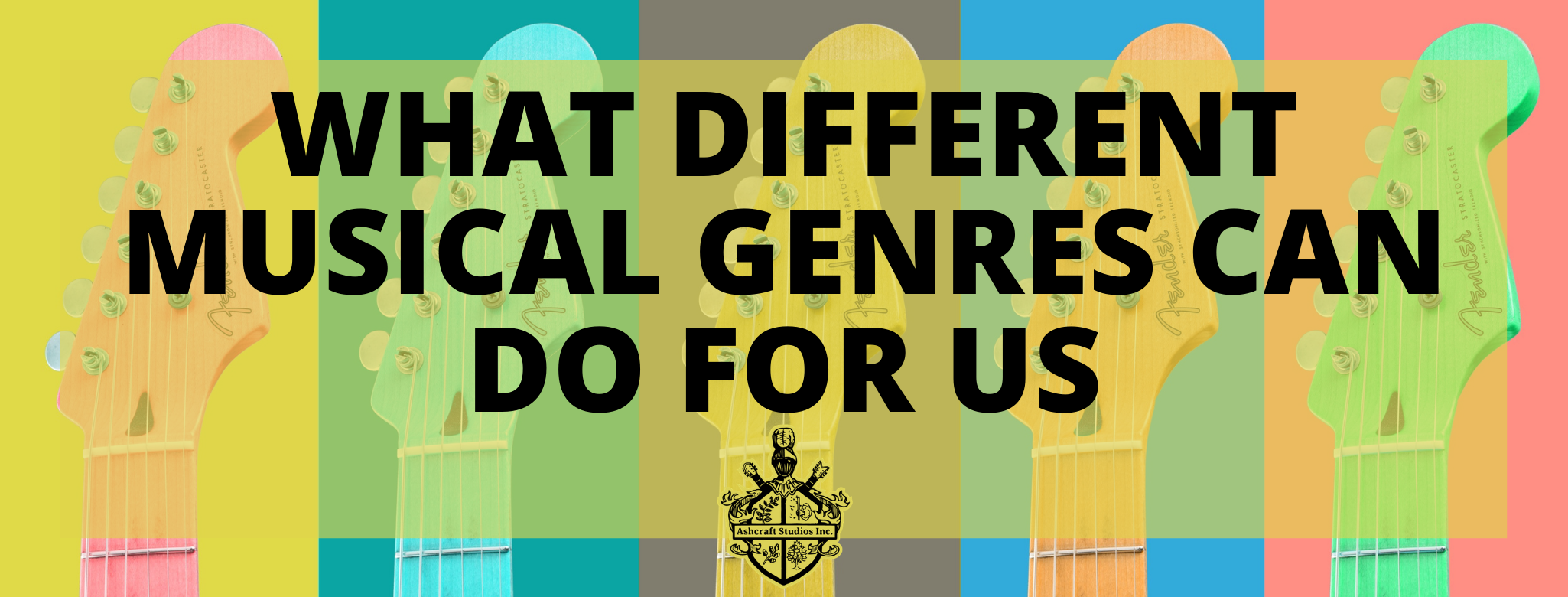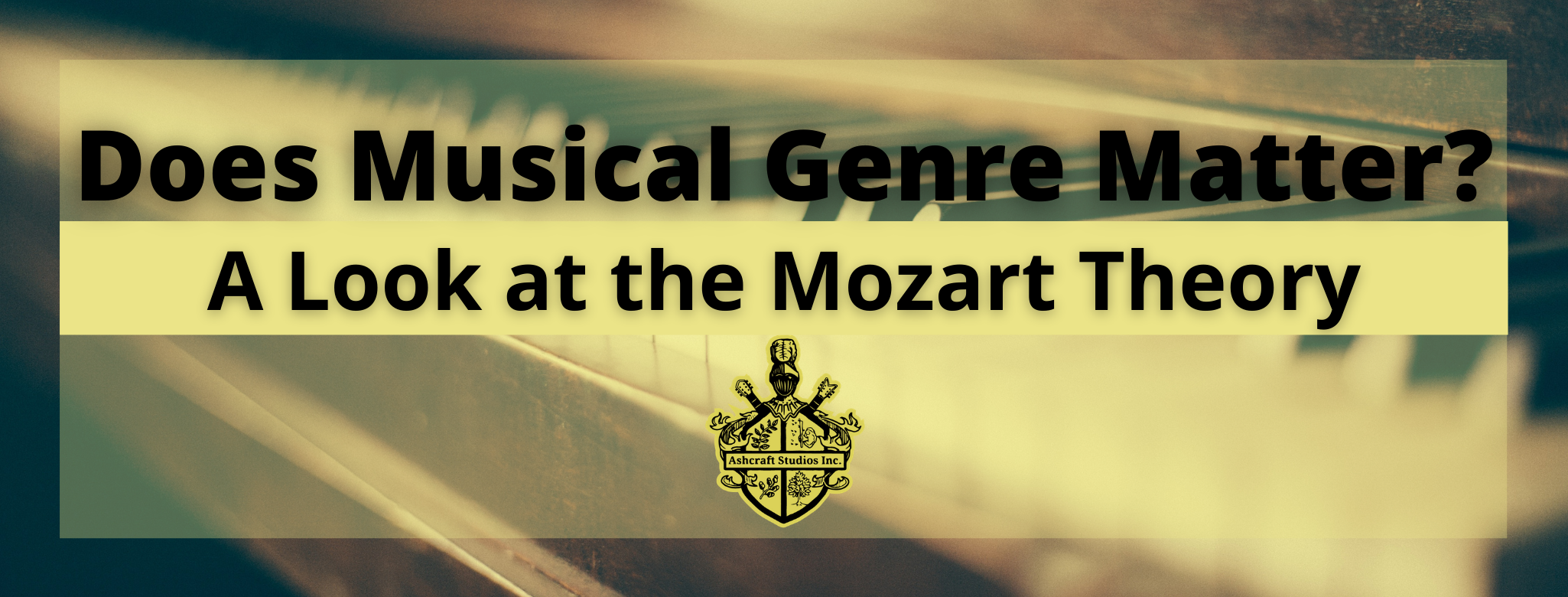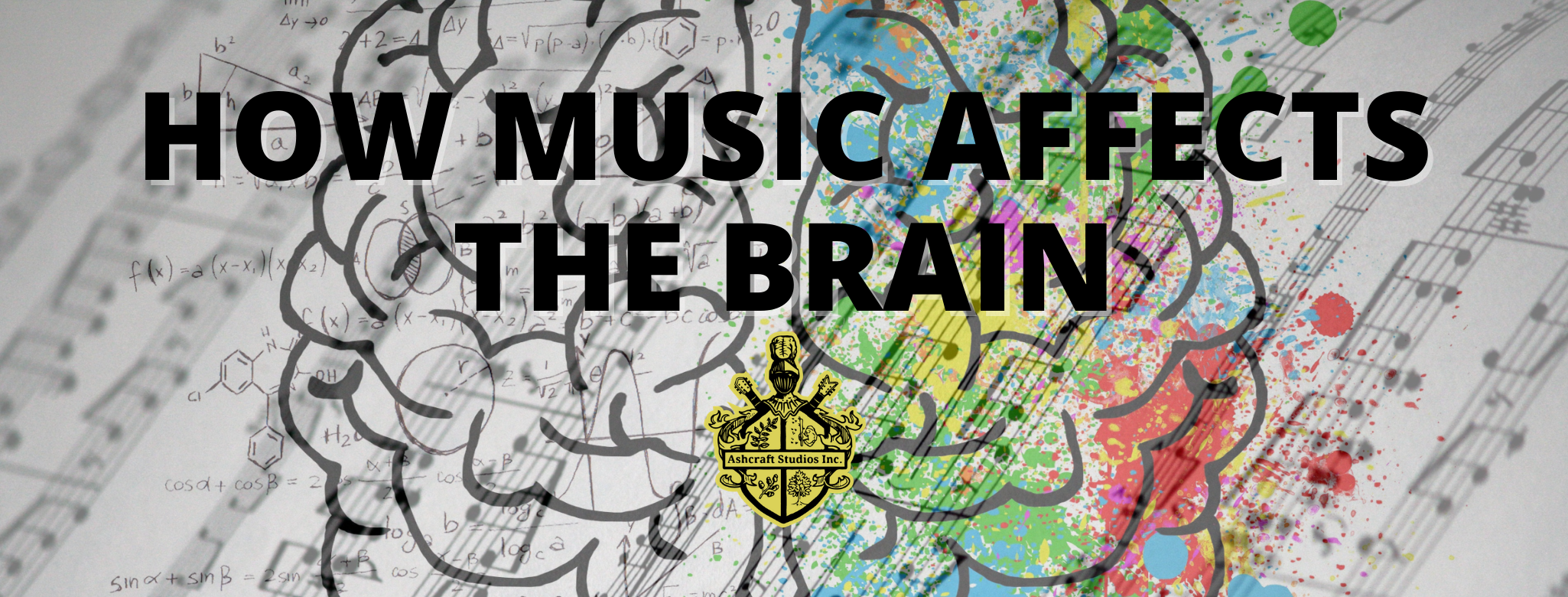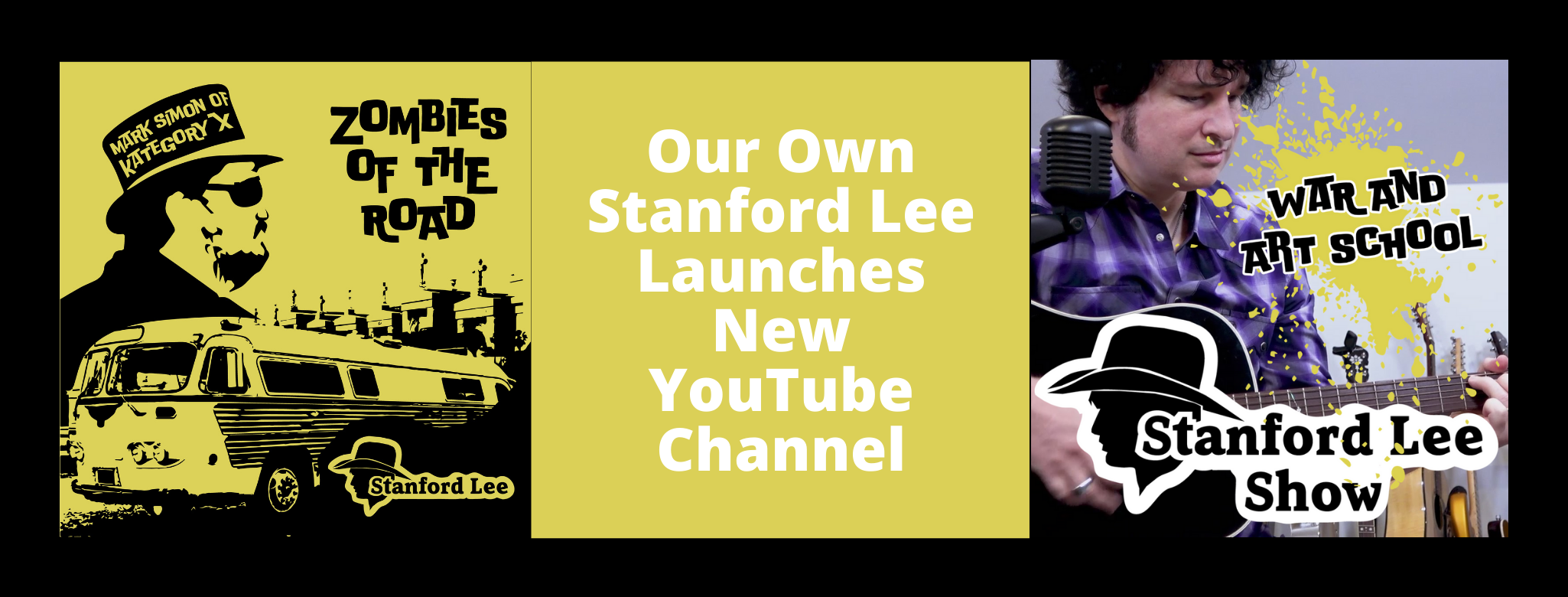|
For the past couple of weeks, we have talked about how music affects the brain. Last week we discussed the Mozart Theory and how studies have shown that listening to Mozart can boost the brain’s spatial reasoning skills. However, The Mozart Theory was based on a study of strictly classical music. There is a multitude of other musical genres out there. What effect do those have on our brains?
From classical music to heavy metal, we’re going to review a wide range of musical tastes and see how they can help us increase productivity, boost mood, and cope with daily struggles. Since there’s a lot of ground to cover, we’re going to split this up into two parts. This week we’re going to talk about classical, pop, and rap music. Let’s begin. Classical Music We talked about how Mozart can improve spatial reasoning skills, but what does Classical Music as a whole do for us? On a biological level, classical music releases dopamine that helps to calm us and bring pleasure. Psychologically, classical music has a calming effect on listeners. One study has shown that stroke patients experienced improved visual attention while listening to classical music, compared to patients who had no music to listen to at all. Practical applications of classical music include stress release, boost productivity, increase focus, and even improve public safety. Studies have shown that the natural calm brought by the sound of classical music has proven to be an effective crime deterrent in high traffic areas such as bustling train stations. Pop Music It’s catchy. It’s fun. Pop music makes us want to dance and sing, which may be a distraction for tasks that require focus like studying, but this musical genre does serve a purpose. With simplistic song structure and predictable beats and hooks, pop music offers an uncomplicated endorphin rush that boosts our mood and energy levels. Best for tasks that require minimal focus such as cleaning or exercising, pop music is an effective tool to keep us happy and motivated. Rap Music Similar to pop in its musical simplicity, rap music is known to not only correlated with advanced vocabulary mastery but has also been shown to increase self-identity and encourage personal perseverance. Despite the genre’s reputation for violence, this style of music has gained worldwide notoriety for its reputation for telling stories about survival, redemption, and personal growth. These stories resonate with its listeners inspiring and encouraging them to push through their trials. So, if you’re feeling a little down or overwhelmed about your life, turn on some rap to help you push through. Next week we’ll be talking about the effects and practical applications of country music, jazz music, and heavy metal. Make sure you join our mailing list and have it delivered straight to your inbox. Never miss a thing and join our mailing list today.
Stay Connected. Follow us on Social Media.  
0 Comments
Last week we talked about how music affects the brain. We learned how the human ear processes sound waves and translate the waves into an audible sensation. We also covered a little body chemistry and talked about how dopamine boosts our mood and gives us feelings of happiness and sometimes the “chills.” From biology to the chemistry we discussed the physical and emotional aspects of music on the human brain, but throughout my research one question has repeatedly been asked, does musical genre matter?
Does it matter what kind of music we listen to? What seems to be a simple question may yield some complicated answers. Let’s take a look. The Mozart Theory Have you ever heard of the Mozart Theory? If you haven’t, the Mozart Theory was first introduced in 1993 by a group of scientists at the University of California, Irvine. The scientists conducted the study by asking a group of participants to listen to two piano sonatas by Mozart while another group listened to either silence or relaxation audio. The results of the study showed that those who listened to the sonatas showed an increase in spatial reasoning skills within ten to fifteen minutes of hearing the music. Those who were not exposed to the sonatas did not show a significant increase in brain function. The study also considered the long-term effects of classical music and performed a series of tests gauging the long-term implications of exposure to classical music on a group of toddlers. The children were provided either classical music training on keyboards or computer lessons for six months. The children who received the keyboard lessons earned 30% higher marks on a spatial-temporal reasoning test than the kids who took the computer lessons. Shortly following the release of the study’s results a flood of Baby Mozart CDs hit store shelves, successfully making parents everywhere believe that if they cared about their children, they need to play Mozart nonstop or risk having an academically stunted child. But despite the study’s claims, was it enough to justify the craze? What if it wasn’t Mozart‘s music, but rather the effect of musical exposure that helped the brain improve? What do you think? Check back next week where we’ll talk about different music genres and how they affect how we think and feel. Never miss a thing and join our mailing list today.
Stay Connected. Follow us on Social Media.  
Anyone who has felt music knows how much impact music can have on a person’s mood. Music can lift us and make us happy, or it can remind us of the hurt and pain we’ve experienced. But what is the science behind it? What about music makes us react so strongly? Let’s discuss this.
The Basics – How Do We Hear? Sound waves reach our ears and funnels into the eardrum via the ear canal. Once the waves hit the eardrum, the drum vibrates traveling down a network of tiny bones. The final bone, the stapes, connects to the cochlea, a fluid-filled space lined with 10 to 15,000 thousand hair cells called cilia. As the vibrations from the eardrum pass through the bones and enter the cochlea, the fluid causes the cilia to sway and release chemical neurotransmitters activating the auditory nerve. Remember those neurotransmitters, we’ll get back to that in a moment. Once the nerve is activated, small electrical currents are sent to the auditory cortex found in the temporal lobe of the brain. And that, my dear listeners, is how we can hear. Our Good Friend Dopamine So back to those neurotransmitters I mentioned earlier. The chemical neurotransmitter released by the cilia is known as dopamine. Does that sound familiar? Better known as the “feel-good hormone,” dopamine is responsible for all those good feels we get when we experience something pleasurable. That feeling you get when you fall in love or when you eat something truly delicious? Yep, that’s dopamine in action. A study performed by McGill University in Montreal showed that dopamine levels increased by 9% when volunteers listened to music they enjoyed. Interestingly enough, during the same study, researchers found that the level of dopamine varied depending on how much the listener enjoyed the music. Listeners who enjoyed the music and reported feeling a “chill,” otherwise known as musical frisson, exhibited higher levels of dopamine than with music they didn’t enjoy, or experience the “chills” with. Does music give you the chills? Hard as it may be to believe, some people never feel that “chill” when they listen to music. Amusia is a disorder, often referred to as “tone-deaf” in which an individual is unable to observe any differences between pitch and tone. It is estimated that about 1 in 20 people are affected by this disorder and may be present from birth or the result of an injury. Join me next week as I keep the conversation rolling. Does genre matter? Never miss a thing and join our mailing list today.
Stay Connected. Follow us on Social Media.  
Our very own Stanford Lee has done something awesome! The Stanford Lee Show is now available on YouTube offering a variety of talk and musical performances by Stanford Lee himself and musical guests. The web series launched on YouTube and we couldn’t be any more excited to see what he does next. First released on Halloween day, the Stanford Lee Show came out with a special Halloween treat. Starting the show was Mark Simon of Kategory X, clad in a brown trench coat and donning a dark brown top hat complete with a snake skin band and rattlesnake head ornament in the front. Accompanied by Stanford Lee on guitar, the two performed Stanford’s “Zombies of the Road” setting the mood for the show’s Halloween special. Following Simon’s live performance, the two sat down to discuss philosophy and the source of their inspiration for their musical projects. Being longtime friends, the pair had a lot to talk about, including their work together as artists and their impact on their own personal stylings. They even revealed the source of Simon’s curious snake skin hat, in case you were wondering where such an oddity was produced. The show’s second installment, “War and Art School” was released a week later providing viewers with an inside look into Stanford’s mind. Discussing everything from, well war to art school, Stanford reminisced about his life being part of a large family with a strong military history and how it impacted him as an artist. The next episode is expected to release next week and new episodes are slotted to release weekly. Ashcraft Studios is grateful for the hard work of Tesselation Media Productions for their production of the series and looks forward to the many projects we have lined up with them. Be sure to subscribe to our weekly newsletter so you can stay on top of all our upcoming projects. Never miss a thing and join our mailing list today.
Stay Connected. Follow us on Social Media.  
|





 RSS Feed
RSS Feed
